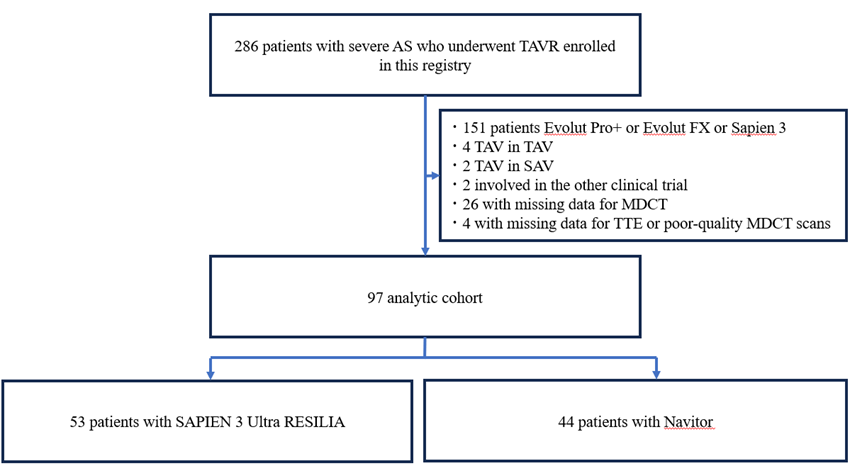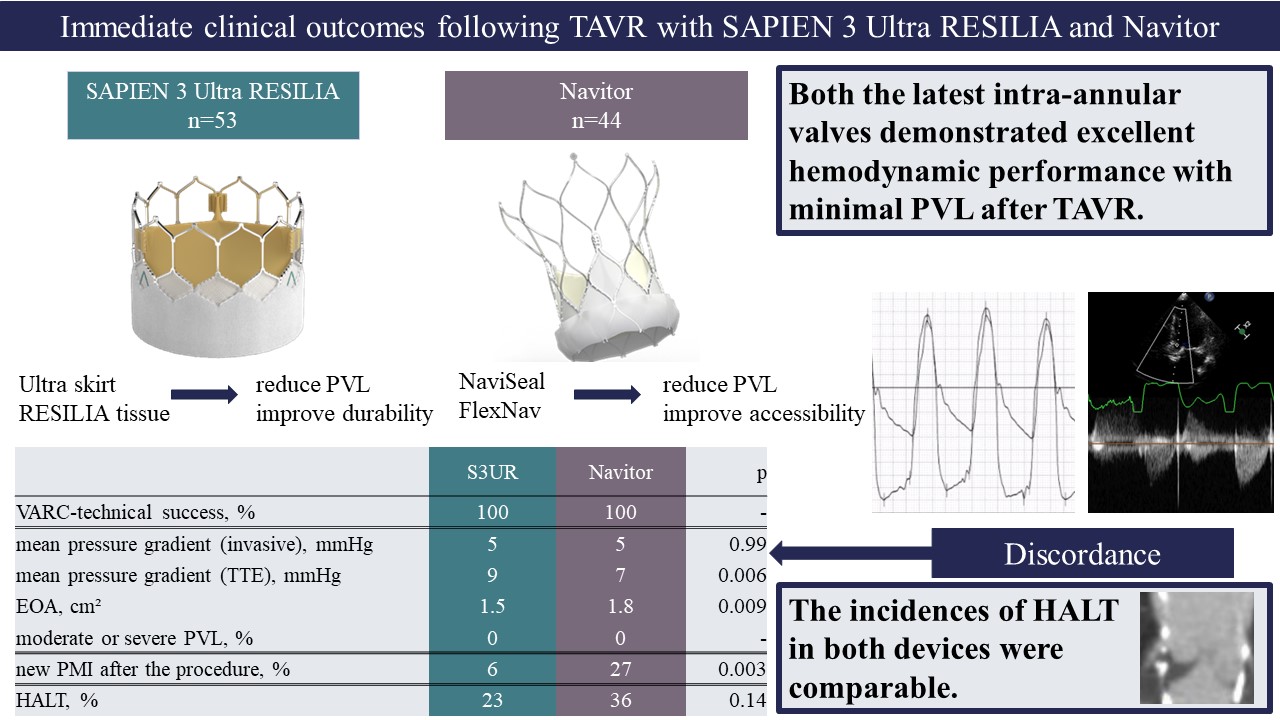Lots of interesting abstracts and cases were submitted for TCTAP 2024. Below are the accepted ones after a thorough review by our official reviewers. Don’t miss the opportunity to expand your knowledge and interact with authors as well as virtual participants by sharing your opinion in the comment section!
TCTAP A-006
Immediate Clinical Outcomes, Hemodynamic Performance, and Leaflet Thrombosis Following Transcatheter Aortic Valve Replacement With the Latest Intra-Annular Devices
By Juri Iwata, Kentaro Hayashida
Presenter
Juri Iwata
Authors
Juri Iwata1, Kentaro Hayashida1
Affiliation
Keio University School of Medicine, Japan1
View Study Report
TCTAP A-006
Computed Tomography
Immediate Clinical Outcomes, Hemodynamic Performance, and Leaflet Thrombosis Following Transcatheter Aortic Valve Replacement With the Latest Intra-Annular Devices
Juri Iwata1, Kentaro Hayashida1
Keio University School of Medicine, Japan1
Background
The indication of transcatheter aortic valve replacement (TAVR) is shifting toward younger and lower-risk patients. Data on the latest intra-annular TAVR devices are scarce.
Methods
Of the 286 patients whounderwent TAVR between May 2022 and October 2023 at our center, we enrolled 97consecutive patients who received either S3UR or Navitor and underwent intraproceduralinvasive hemodynamic assessment and postprocedural MDCT.


Results
Among the 97 patients (median age, 86 years [interquartilerange: 81–89]), the basic characteristics were similar. Valve Academic Research Consortium-defined technical success was achieved similarly in all cases. Despite of smaller annulus, Navitor demonstrated improved post-procedural hemo dynamic performance(mean pressure gradient by TTE, 9.2 [7.3–13.6] mmHg vs. 7.5 [5.9–9.5] mmHg,p=0.006; by invasive measurement 5.1 [3.4–7.7] mmHg vs. 5.3 [3.2–7.9] mmHg, p=0.986),however severe prosthesis-patient mismatch was noted similarly between the two devices. Mild paravalvular leak (PVL) (24.5% vs. 54.5%, p=0.002) and permanent pacemaker implantation (5.7% vs. 27.3%; p=0.003) were more frequent with the Navitor,despite no moderate-severe PVL in each group. The incidence of hypo-attenuated leaflet thickening (HALT) detected by MDCT was similar between the two groups.


Conclusion
Bothintra-annular valves demonstrated excellent hemodynamic performance with minimalPVL after TAVR. The incidences of HALT inboth devices were comparable.Navitor demonstrated better hemodynamic performance and ahigher rate ofpacemaker implantation rather than S3UR.

